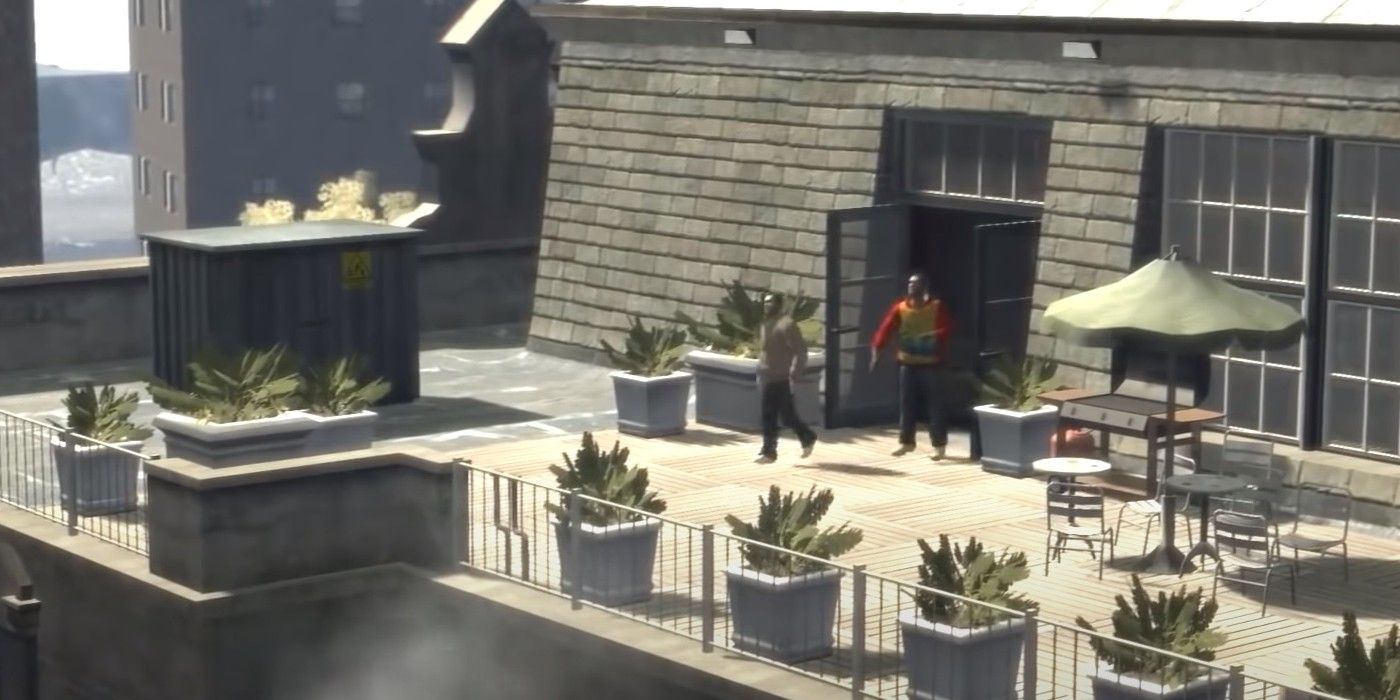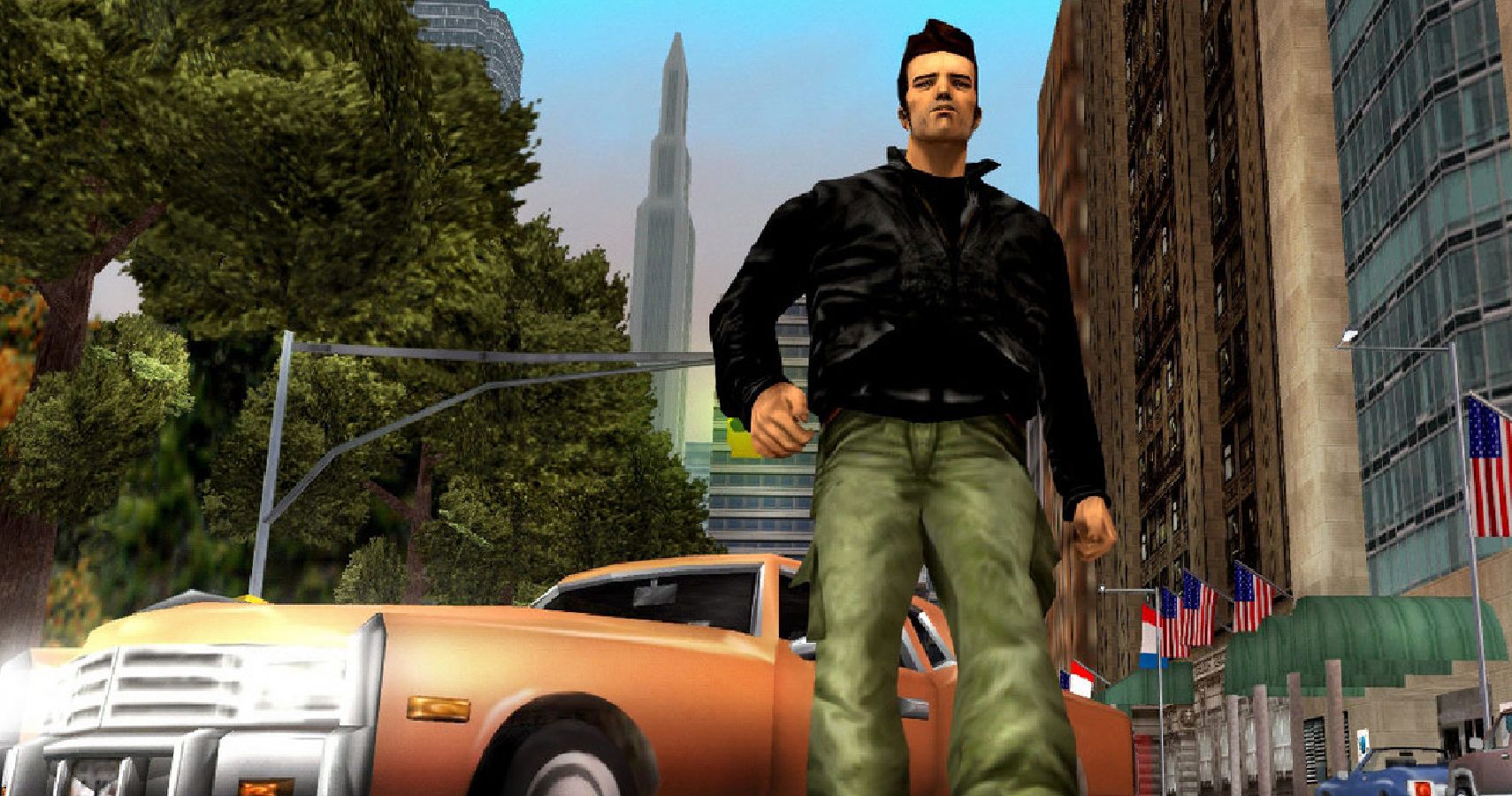Rockstar’s Grand Theft Auto III and Grand Theft Auto IV are iconic games separated by a console generation and set in starkly different versions of the same fictional city. Both were released early in the life cycle of their respective console generations, setting the bar for what sort of functional design was possible for new hardware, and what kind of storytelling could be expected from a mayhem simulator. GTA III was the first three-dimensional Grand Theft Auto game, initially released in 2001 to the sixth-generation PlayStation 2 before its eventual port to the Xbox and PC, while Grand Theft Auto IV introduced GTA‘s HD Universe simultaneously on the seventh-generation PlayStation 3 and Xbox 360 in 2008, as well as introducing a new kind of GTA protagonist.
The differences between Liberty City in Grand Theft Auto III and Grand Theft Auto IV show how much the possibilities of gaming changed in six years. Some of these differences can be explained in the tools used to create them. Between 1997 and 2002 there were nearly thirty games made with Criterion’s RenderWare game engine technology, though GTA III is far and away the most iconic. Grand Theft Auto IV was cutting edge; it was just the second game released – after Rockstar Presents: Table Tennis – in Rockstar’s own proprietary RAGE (Rockstar Advanced Game Engine). Beyond the obvious graphical upgrade, the new gaming systems and the new engine provided new ways of interacting with the world, even as those interactions were built off of the established Grand Theft Auto formula of stealing cars and hurting people.
Grand Theft Auto III was one of the first games to popularize open-world design shortly before the release of The Elder Scrolls III: Morrowind, a legend in its own right. Both games have rich legacies, but GTA III‘s sandbox arguably had a wider reach in the popular imagination of casual gamers (and society-wide moral panic that has been a common staple). GTA III led to five sequels and spin-offs on the sixth generation of videogame consoles (Grand Theft Auto: Advance, Vice City, San Andreas, Liberty City Stories, and Vice City Stories) as well as a legions of clones like the True Crime series, Mercenaries, and Saints Row.
Wrapped in that wide-reaching legacy is Grand Theft Auto‘s memorable, if rough, recreation of New York. Liberty City is the stand-in for the Big Apple in the Grand Theft Auto series’ satirical take on the United States. While Grand Theft Auto III‘s Liberty City is iconic for making open-world sand boxes an aspirational standard for the world of AAA gaming, Grand Theft Auto IV‘s Liberty City hemmed closer to the real New York in its architectural design and the feel of the environment, bringing the world alive through its landmarks and people.
Boroughs, Landmarks, & People Made GTA IV’s Liberty City

Setting plays a huge part in any story, and the teams behind GTA’s many settings have clearly prided themselves on making time and place matter to their environments. The most obvious difference between the two versions of Liberty City is that GTA IV‘s 2008 Liberty City more closely resembles real-life New York. Part of this is because hardware and software development gradually allowed a prettier, more realistic city. GTA IV‘s Liberty City felt authentic because it closely copied New York’s neighborhoods and landmarks.
In GTA III, working class parts of Brooklyn and Queens combine with parts of Long Island to become the industrial island of Portland, Manhattan’s commerce is recreated in Staunton Island, and parts of upstate New York and New Jersey are combined with the Bronx for the residential Shoreside Vale. In GTA IV, the comparisons are more exact: The Bronx is recreated as Bohan, Brooklyn as Broker, Queens as Dukes, and Manhattan as Algonquin. GTA IV also recreates the state of New Jersey as Alderney, while Staten Island gets skipped over.
GTA III‘s Liberty City landmarks do not stand out as clearly as those in GTA IV, though Staunton Island tries to recreate Manhattan’s financial district with “Torrington,” Times Square with “Bedford Point,” and a park in its center. Grand Theft Auto IV goes further, with the Empire State Building recreated as “Rotterdam Tower,” Coney Island recreated as “Firefly Island,” a coffee-wielding Statue of Liberty called the “Statue of Happiness,” and the Unisphere in Flushing, Queens recreated as the “Monoglobe” in Dukes, just to name a few of the many.
The vibrant environment of Liberty City in the latter title also comes from the depth and richness of GTA 4‘s characters and plot. The Liberty City of Grand Theft Auto IV feels like a place with history and real lives. GTA III‘s world is closer to a cartoon with realistic touches, broadly referencing art like The Godfather and Goodfellas by making fun of wiseguy-type characters, evading interior analyses of what those characters mean. GTA IV‘s Liberty City, while not quite in the uncanny valley, is a closer digital approximation of real humanity and lived experience.

From the introductory cinematic cutscene, the visual design impresses upon the audience that Liberty City is an ecosystem with people going on about their lives, with businesses and adventures that will happen whether or not the player is there, but which they can catalyze and contribute to. The player still has the option and incentive to steal cars and shoot people, but they also have the opportunity to play pool and darts at bars with their NPC friends, to give houseless people money, or to take dates to see comedy shows. These options contribute to the HD Universe Liberty City feeling like a real living place.
Grand Theft Auto III‘s Liberty City also wasn’t static, but it felt like a playground, not an ecosystem, populated by flatter characters and generic group stereotypes. It was a fun location but, relative to what GTA fans saw later, not a deep one. The members of each criminal enterprise wore matching outfits and had matching cars – from the Diablo’s Stallions with flame paint jobs to the Leone family mafia with their BMW-inspired Sentinels. In each game’s story, the protagonist – voiceless Claude in GTA III and Balkan war veteran Niko Bellic in GTA IV – is new to Liberty City and begins by working for a criminal organization that betrays him, so his personal need for revenge lead him to being further-embroiled in organized crime as well as doing dirty favors for the political establishment.
Claude as a voiceless cypher moving through a world of caricatures does not have as much agency or impact. Niko Bellic is an immigrant and refugee to a city of immigrants, who throughout Grand Theft Auto IV is interacting with immigrants and their descendants – Americans of Russian, Italian, Puerto Rican, Jamaican, and Irish descent among them – all of whom have something to say about the ways Liberty City contrasts with the places they and their families come from, and the space between what Liberty City is and what they want it to be.




